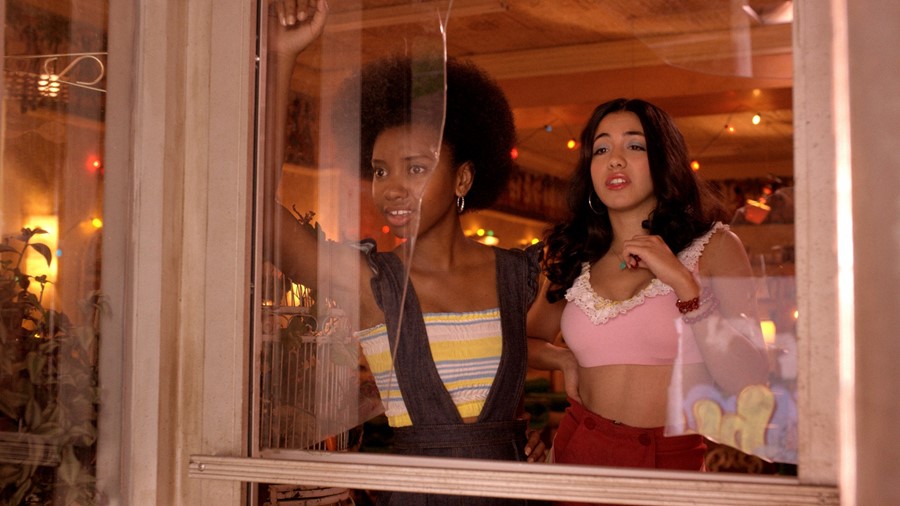We meet the costume designer behind the new Netflix series to talk walking Grandmaster Flash through her wardrobe rails and ransacking Diane von Furstenburg's Studio 54 archive
There are few directors who understand the power of costume quite so emphatically as Baz Luhrmann, a man whose fantastical aesthetic and thoroughly visual approach to filmmaking has become a defining facet of contemporary cinema. Remember, for example, Leonardo di Caprio’s Hawaiian-print shirts in Romeo + Juliet, Nicole Kidman’s exceptional basques in Moulin Rouge – and now, the whole wardrobe in new Netflix series The Get Down, a magical realist exploration of 70s New York and the music scenes it spawned. While Luhrmann traditionally collaborates with his wife, Catherine Martin, for The Get Down the duo took more executive roles and thus engaged the talents of Jeriana san Juan, who worked with them both on the first episode before taking the wardrobe's reins for the rest of the series.
So, with the help of Luhrmann and Martin – and the constant advisement of Grandmaster Flash who, as well as being one of the key figures in the series' narrative, was also on hand to advise on the authenticity of san Juan's outfit selections – the costume designer rummaged through Diane von Furstenburg’s personal archives of 70s clubwear, sourced the original Keds that hip-hop kids would wear to get down, and created an enviable revisioning of late-70s style with a meticulous attention to detail. Here she explains how, why and precisely what that process involved...
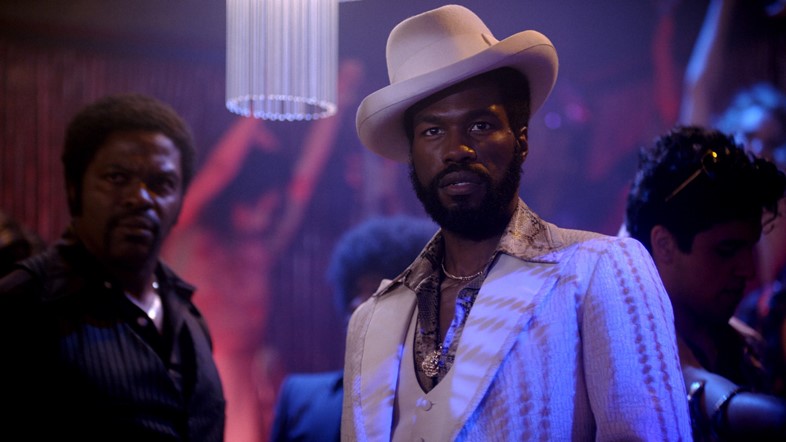
On the importance of character development…
"I was able to sit in on the development sessions, and very much be a part of the process of growing the definitions of the characters themselves. I got to understand what celebrities they would be looking to for style inspiration, what books they were reading – or, whether they were reading at all, whether they might be more interested in what was happening in films. All of those influences that created each character really helped me further define their look and style – and because I got to sit in on choreography sessions, I also got to understand how each character moved. For example, the way that Cadillac moved was quite animalistic, almost like a panther, and that inspired this idea that he would have a very animal print theme in his wardrobe and that all of his colours would sort of have a shine and a gloss to them so that the light bounced off him and moved almost like a snake."
"I think it was very important to Baz that we created a visible distinction between the worlds of disco and hip-hop, and I helped enhance that through the colours that the characters wore. The Studio 54, disco looks are often of secondary colours – and, of course there is also a great deal more sparkle, sequins and metallics. When we got to the get down, it was all about using natural fibres, a lot of cotton and a lot of stretch, a lot of denim, a lot of canvas, using sportier prints and stripes. It was all about creating as much difference between those two worlds as possible."
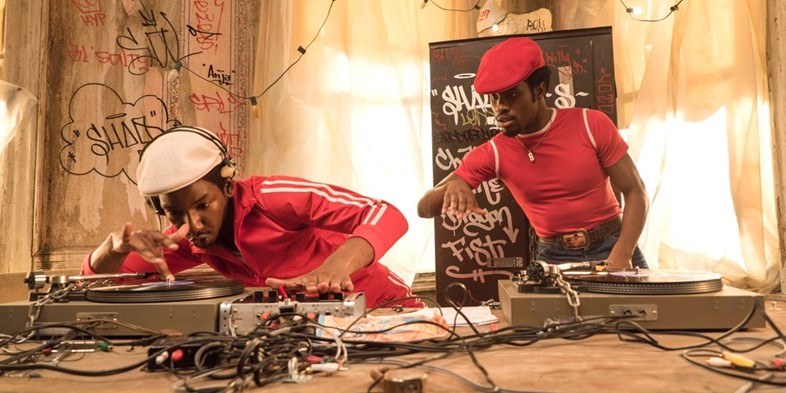
On the intensive research process and collaborating with hip-hop heroes…
"Before we started, Baz had created this enormous, encyclopaedic trove of research – it was kind of insane – and it looked at everything from who the most popular DJs were at the time, to who was in political office, and a complete timeline of hip-hop history. Plus, there are some amazing documentaries about that period, like Style Wars, From Mambo to Hip Hop, NY77: The Coolest Year In Hell, 80 Blocks from Tiffany’s… and all of those really helped me to understand the era. I also think that I was able to achieve the style in great part because of Grandmaster Flash, and Curtis Blow, and Nelson George. They were all very much present during that time, and it was a huge research resource for me to be able to call them directly and ask questions. I asked Flash if he could pay a visit to the space I was working out of, look through my racks of clothing and talk to me about street style from back then: tell me which pieces were aspirational, precisely what sneaker everybody wanted and nobody could afford. He helped create that landscape for me and it was incredible, and allowed me to be authentic."
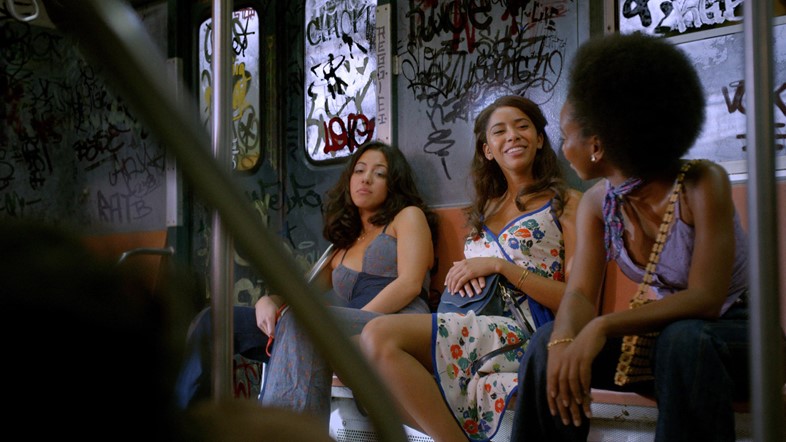
On Diane von Furstenburg’s involvement…
"Diane von Furstenberg is a personal friend of Baz and Catherine’s and, when I was first starting to research the 70s disco scene and images of Studio 54, there she was sitting in the VIP booth in all of the photographs. So, I spoke with her team and asked about getting some original pieces so that I could see them directly – both to recreate and to potentially use. They opened up her archives and told me that I could select anything that I wanted that was in there – it was incredible! I took a bunch of dresses and used some of the originals from the show – in fact, the first time Yolanda Kipling is introduced, she is wearing an original Diane von Furstenberg dress from the archives. There are several other moments throughout the series where I borrowed dresses from her collection and recreated them in new fabrics; we would copy the silhouette but make something new so that it had a fresher look to it."
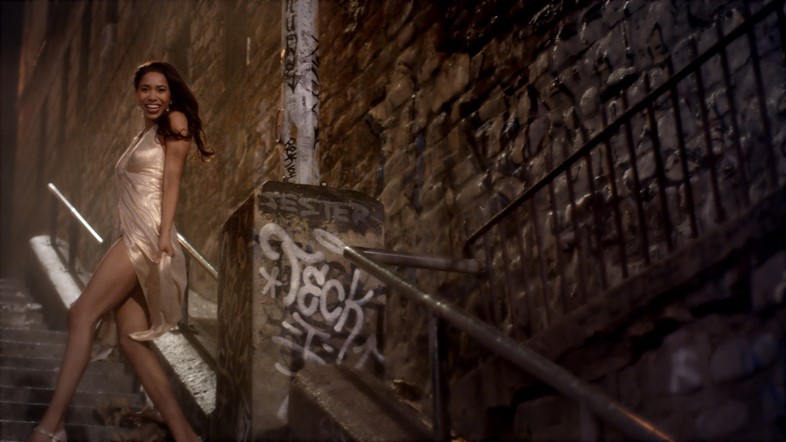
On Mylene’s disco dress…
"The dress that Mylene wears to the club is a Halston dress from their archives – and I think it had actually been worn at Studio 54 because it was kind of falling apart. I tried out all of these Halston pieces on Mylene, and this one really stood out so I took it to my pattern maker and had them recreate it in this rose gold lurex; it came together quite beautifully! The matching panties were actually a last minute addition because I realised that, after I’d seen a few dance rehearsals, we needed them. It was actually a very popular thing at the time, because so much of the hustle was about spinning and dancing, so you needed something to match..."
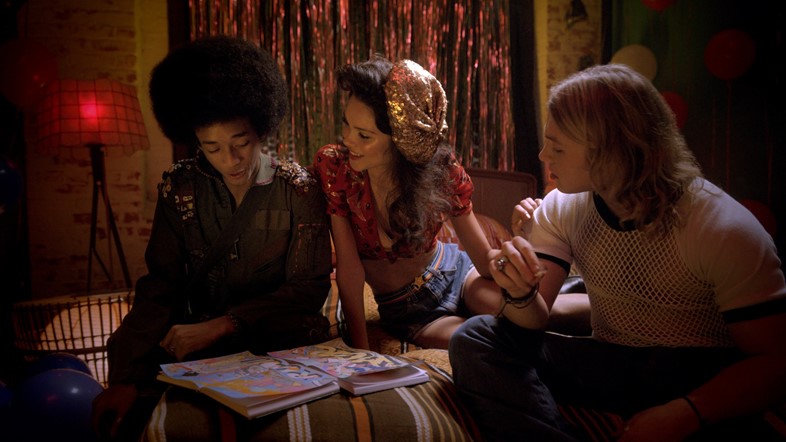
On recreating fabulous 70s Voguing...
"Working on that scene was absolutely the best thing ever; I love the style of Voguing, and I love the look of the different houses that took part in it – again, the costumes were all rooted in research, in the House of Extravaganza and the style of performers like Willy Ninja. Then, I kind of went into different characters that were making an appearance at, say, Andy Warhol’s loft or in the downtown scene, who might be present there, too. It was really a moment to go over the top and be dramatic and legendary in that Baz Luhrmann way. We cast actors who each reflected different characters for the time, and created reference and mood boards for each one of them – and the dancers are actual Voguers, so each of them brought a signature style of movement to the runway. When it came to someone like Flawless Sabrina [the character singing], it was about creating a look that at first appears feminine, and then masculine – about crossing those gender barriers, and playing with androdyny, and celebrating this gender neutral fabulousness. That era made it okay to be whatever each person was, so long as they were fabulous."
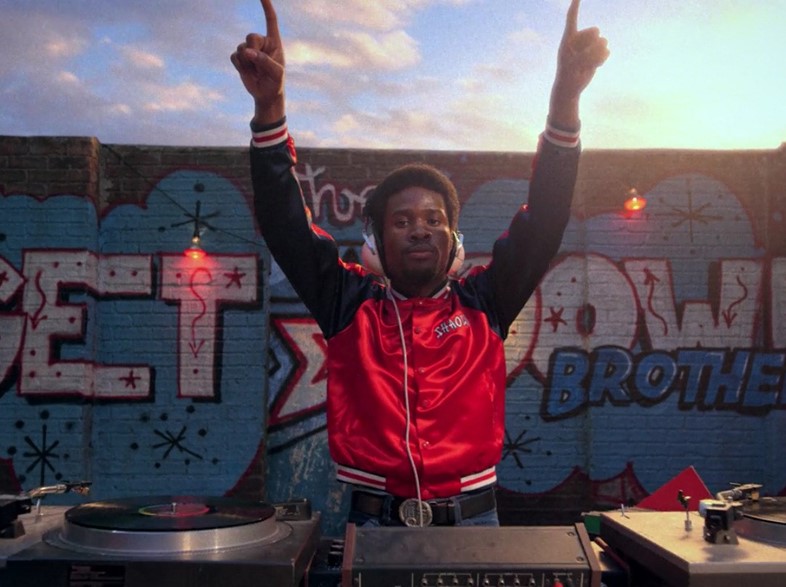
On the final scene...
"The outfits in the final scene were really pulled from images that Grandmaster Flash helped me find of early hip-hop crews. That look was being formed in the late 70s, when the crews were first starting to identify as crews and were dressing alike – be that matching suits, matching T-shirts, or items with their initials or crew names emblazoned on them. There was one image of this crew wearing baseball style bomber jackets – you know, the satin bomber started to make an appearance in the late 1970s? – and I thought, wouldn't it be fabulous if they all dressed in them with the Get Down Brothers on the back, but gave each of them their own signature within that look. I helped create that font and logo and it was such an enormous process – we went through many, many, many different ideas – but it was a big undertaking because it was the first time that we were establishing the crew as successful, the moment when we see that crew form in front of our eyes."
